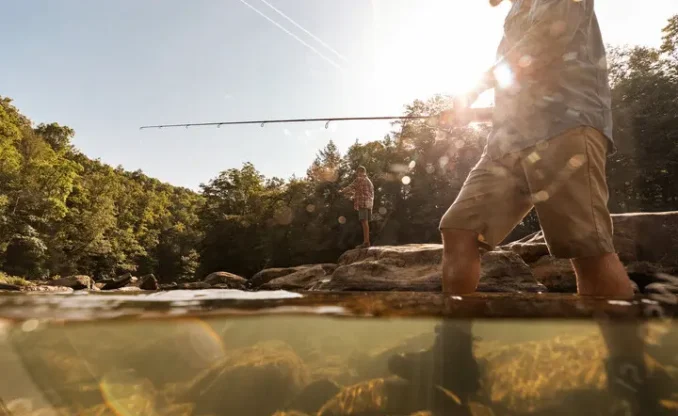Family: Amiidae
Common Family: The Bowfin Family
Common Name: Bowfin
Scientific Name: Amia calva
Ecological Description/Identification
Bowfin are stout fish, brown to olive in coloration and often mottled or blotched. The top of the head is flattened, the mouth is large and filled with strong, sharp teeth. The sex of adults can be differentiated by a spot on the upper base of the tail. The male’s spot is rimmed with orange-yellow, the females rim is lacking or the spot is absent. On the underside of the head is a distinct gular plate, which when dried and processed in a lab can be used to assign age estimates to individuals much like counting tree rings. A feature of the bowfin’s unique primitive structure is an air bladder connected to the throat and used as a lung. This unique connection allows Bowfin to utilize waters undesirable by other fish due to low oxygen levels. They essentially gulp air at the surface, which is passed to the air bladder with oxygen and then absorbed internally.
Spawning occurs April through June, depending on water temperature. They make nests among vegetation. The male builds a nest using his mouth to remove vegetation and debris, while also sweeping away the bottom with his fins and body. Bowfin usually spawn at night, with the males guarding the nest and protecting the young fish.
Once hatched after eight-to-10 days, the young attach themselves to debris using an adhesive structure on their snout or lie on their sides in the nest until they are a half-inch long. When able to swim they school around the male for his protection. At approximately 4 inches long, they move off on their own. Other fish comprise most of this voracious fish’s diet. The also catch and consume anything they can eat, including birds, turtles, crayfish and amphibians, especially when their preferred food items are not as available.
Habitat
Bowfin are found in most parts of the United States, from the Mississippi drainage eastward to the St. Lawrence River and south from Texas to Florida. West Virginia Bowfin inhabit shallow, weedy lakes and sluggish rivers and streams. They are seldom found in fast currents. The Ohio River backwaters close to Green Bottom WMA was a recent location for a state record weight catch of 9.25 pounds. The West Virginia length record is a 32.25-inch bowfin caught in a Berkeley County pond. The world record is from South Carolina, weighing in at a whopping 21 pounds, 8 ounces, caught in 1980 in a lake near Greenville.
Conservation Issues
There are no conservation issues related to bowfin.
Facts
Bowfin are harvested commercially in some southern states and are considered a nuisance to some anglers when targeting other desirable species such as Bass or Crappie. However, bowfin are great fighting fish on any tackle and will aggressively strike artificial lures.
Similar Species
Bowfin are often confused with the invasive northern snakehead fish. They are similar in appearance, especially their elongated, cylindrical shape and long dorsal fin along their backs.



